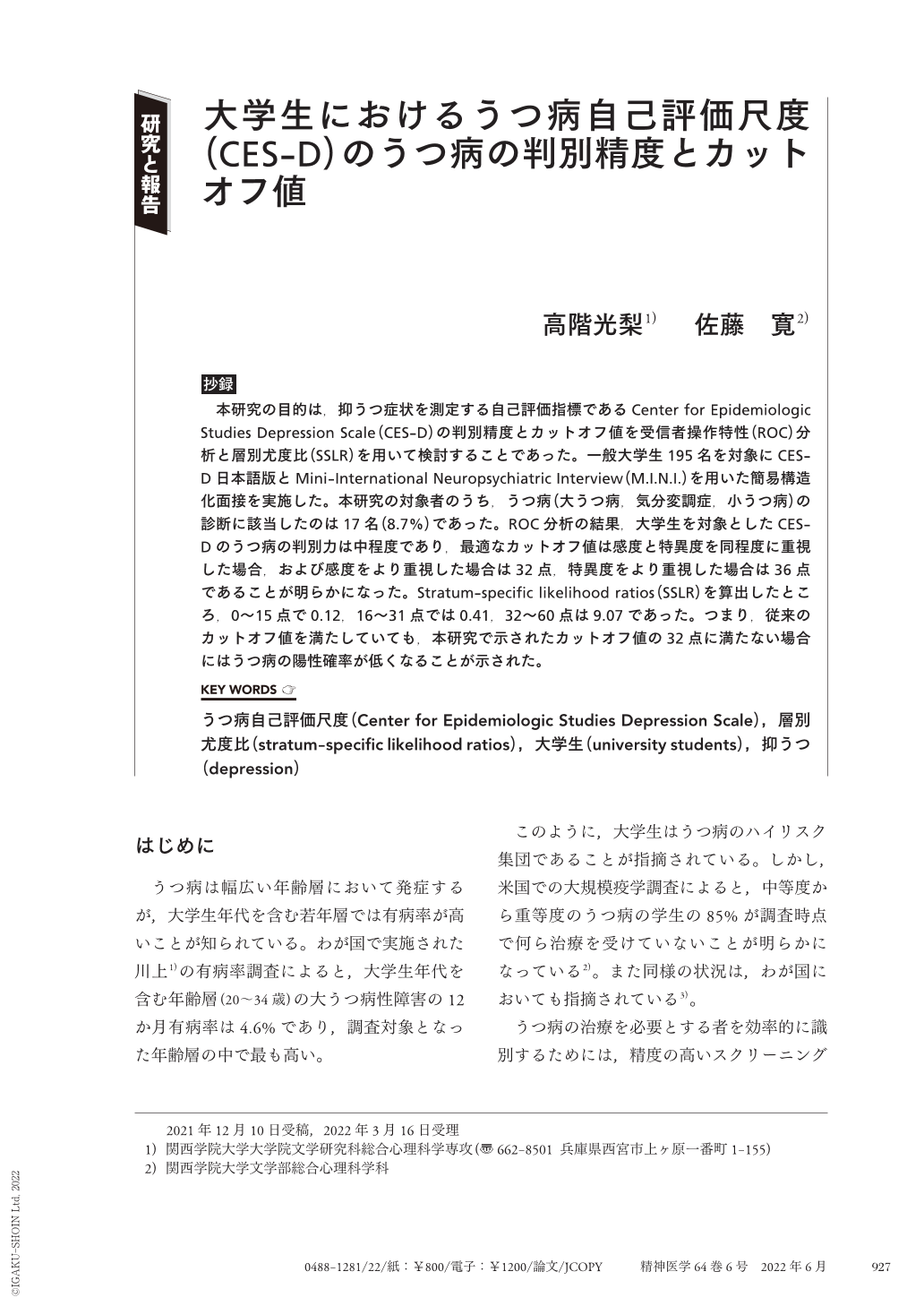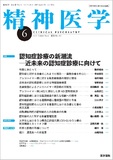Japanese
English
- 有料閲覧
- Abstract 文献概要
- 1ページ目 Look Inside
- 参考文献 Reference
抄録 本研究の目的は,抑うつ症状を測定する自己評価指標であるCenter for Epidemiologic Studies Depression Scale(CES-D)の判別精度とカットオフ値を受信者操作特性(ROC)分析と層別尤度比(SSLR)を用いて検討することであった。一般大学生195名を対象にCES-D日本語版とMini-International Neuropsychiatric Interview(M.I.N.I.)を用いた簡易構造化面接を実施した。本研究の対象者のうち,うつ病(大うつ病,気分変調症,小うつ病)の診断に該当したのは17名(8.7%)であった。ROC分析の結果,大学生を対象としたCES-Dのうつ病の判別力は中程度であり,最適なカットオフ値は感度と特異度を同程度に重視した場合,および感度をより重視した場合は32点,特異度をより重視した場合は36点であることが明らかになった。Stratum-specific likelihood ratios(SSLR)を算出したところ,0〜15点で0.12,16〜31点では0.41,32〜60点は9.07であった。つまり,従来のカットオフ値を満たしていても,本研究で示されたカットオフ値の32点に満たない場合にはうつ病の陽性確率が低くなることが示された。
The Center for Epidemiologic Studies Depression Scale(CES-D)is a self-report measure of depressive symptoms. The aim of the present study was to examine the scale's discriminant accuracy and determine a cutoff score for Japanese university students. The CES-D was administrated on 195 university students(72.3% women;age18-29). The Mini International Neuropsychiatric Interview(MINI)was also conducted with the participants. The study made use of the receiver operating characteristic(ROC)analysis and stratum-specific likelihood ratios(SSLRs)in order to determine the cutoff score of the CES-D. The ROC analysis revealed that the discriminant accuracy of the CES-D was moderate, and that the optimal cutoff-score was 32 points. The results showed that subjects with scores below 32 points had reduced probabilities of depression even when they scored above the standard cutoff score of 16 points.

Copyright © 2022, Igaku-Shoin Ltd. All rights reserved.


